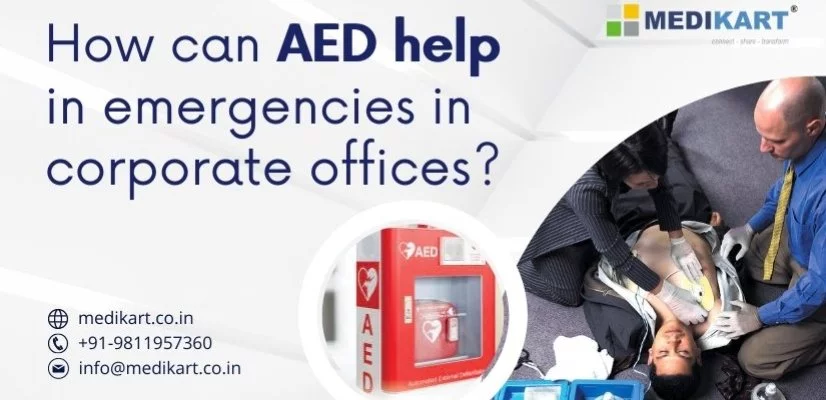AEDs (automated external defibrillators: AED Full Form) are portable, life-saving devices used to treat persons who have experienced sudden cardiac arrest, a medical condition in which the heart abruptly and unexpectedly stops beating. When utilized in the initial few minutes after a collapse from sudden cardiac arrest, a combination of CPR (Cardiopulmonary resuscitation: CPR Full Form) and early defibrillation is beneficial in saving lives. The AED system includes accessories such as a battery and pad electrodes, which are necessary for detecting and interpreting an electrocardiogram and delivering an electrical shock. AEDs in Corporate.
Types of AEDs
AEDs are divided into two categories: public access and professional use:
- People who haven’t had much training can use public access AEDs found in airports, community centers, schools, government buildings, hospitals, and other public places.
- First responders who have received additional AED training, such as emergency medical technicians (EMTs) and paramedics, use AEDs in corporate settings as part of their professional duties.
Semi-automatic and fully automated AEDs are available.
- Semi-automated defibrillators evaluate the heart’s rhythm and encourage the user to press a button to give a defibrillation shock if an aberrant cardiac rhythm is detected that requires a shock.
- Fully automated defibrillators evaluate the heart’s rhythm and, if instructed by the device software, deliver a defibrillation shock without the need for user intervention.
The heart’s chaotic electrical activity causes Sudden Cardiac Arrest (SCA), which requires treatment with an electric shock called defibrillation through a defibrillator machine. SCA is a leading cause of death globally and about 10,000 sudden cardiac arrests occur while victims are at work, according to Occupational Safety and Health Administration (OSHA) data. India reports more than 10 lakh cases of cardiac arrests in a year. Having automated external defibrillators (AEDs) at the workplace, as well as a good management system and employee training on how to use them can be the difference between life and death
Benefits of an AEDs in Corporate
- AED use can effectively restart the heart of a victim who experiences sudden cardiac arrest on the premises. Using an AED becomes an important first-aid procedure when an ambulance is delayed.
- Cardiac arrest can occur at any time due to a variety of reasons. You cannot predict an unexpected event. Having AEDs on hand makes it easier for personnel to handle the situation.
- Most cardiac arrest deaths occur outside hospitals: This means that having the right equipment on hand could save lives.
- Work can increase heart attack risk. Any workplace with high stress levels requires an AED as stress raises the risk of heart attacks.
- Without first aid, the survival rate drops by 10% every minute. So, a patient’s chances are 50% lower if help arrives after 5 minutes.
How to operate an AED
The 4 universal steps for using an AED are as follows:
1: Power ON THE AED. The first step in using an AED is to turn the power on.
2: Attach electrode pads
3: Evaluate the heart rhythm.
4: Clear the victim and press the SHOCK button.
An AED machine for emergencies is better than losing someone. “Precaution is better than cure.” We hope this article has been helpful!
Disclaimer
The information provided is for general knowledge only. Consult your doctor for personalized advice and treatment. Medikart HealthCare is not liable for any actions taken based on this info.

